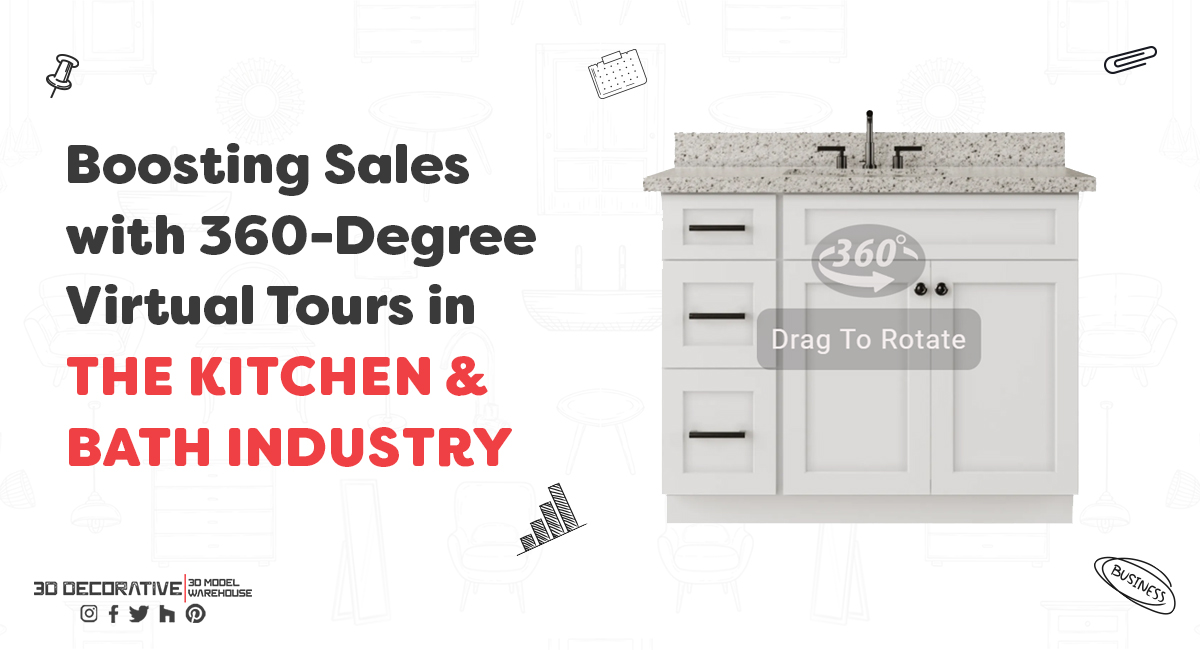Boosting Sales with 360-Degree Virtual Tours in the Kitchen and Bath Industry
- Home
- Boosting Sales with 360-Degree Virtual Tours in the Kitchen and Bath Industry
- Boosting Sales with 360-Degree Virtual Tours in the Kitchen and Bath Industry

In the fast-evolving realm of kitchen and bath design, staying ahead of the curve is crucial for businesses aiming to attract and retain customers. Traditional methods of showcasing designs through static images or blueprints are gradually being replaced by more immersive experiences offered by 360-degree virtual tours. These tours, facilitated by augmented reality (AR) and virtual reality (VR) technologies, provide potential customers with a lifelike, interactive view of their future spaces. This shift not only enhances customer engagement but also significantly influences decision-making processes, ultimately boosting sales for businesses in the kitchen and bath industry.
Understanding the Impact of AR/VR Viewer Images
Imagine being able to step inside your dream kitchen or bath before it’s even built—this is precisely the promise that AR/VR viewer images deliver. These technologies allow potential buyers to explore every angle of a room, zoom in on details, and visualize how different design elements interact with each other. For consumers, this means a more informed decision-making process where they can see firsthand how a particular countertop pairs with cabinetry or how different lighting options affect the ambiance.
Benefits for Consumers
- Enhanced Visualization: AR/VR tours enable consumers to visualize designs in a realistic manner, helping them better understand spatial layouts and design aesthetics.
- Interactive Experience: Users can interact with the virtual environment, making it easier to customize features and explore various options.
- Reduced Decision Time: By experiencing the space virtually, customers can make decisions faster, reducing the typical back-and-forth in the design phase.
Benefits for Businesses
- Increased Sales Conversion: Providing immersive experiences can lead to higher conversion rates as customers are more confident in their choices.
- Competitive Advantage: Businesses that adopt AR/VR early differentiate themselves as innovative and customer-focused.
- Cost Savings: Virtual tours can potentially reduce the need for physical showroom visits, saving on operational costs.
Future Trends and Innovations
As technology continues to advance, so too will the capabilities of AR and VR in the kitchen and bath industry. Future trends suggest even more personalized experiences, such as real-time collaboration tools where designers and clients can interact within the virtual environment simultaneously. Additionally, advancements in photorealistic rendering will make virtual tours indistinguishable from reality, further enhancing the decision-making process for consumers.
Conclusion
The integration of 360-degree virtual tours powered by AR and VR technologies represents a significant advancement in how consumers engage with kitchen and bath designs. By offering immersive, interactive experiences, businesses can effectively showcase their products and services while enhancing customer satisfaction and driving sales. As more consumers embrace digital tools for home renovations, companies that invest in these technologies early will undoubtedly gain a competitive edge in the market. Embracing the future of design visualization not only meets current consumer expectations but also sets the stage for continued innovation in the kitchen and bath industry.
To learn more about how AR/VR can transform your kitchen or bath design experience, visit 3D Decorative. Take advantage of our membership offer and enjoy access to a library of 3D models tailored for your bath design needs. Start visualizing your dream space today!
Frequently Asked Question
Virtual tours allow users to experience their future spaces in 360 degrees, helping them visualize layouts, materials, and design choices more accurately.
AR/VR technologies enhance customer engagement, reduce decision-making times, and increase sales conversions by providing immersive design experiences.
Yes, virtual tours can be customized to showcase different materials, colors, and configurations, allowing users to tailor their designs to their preferences.
By offering a realistic preview of the final product, AR/VR viewer images help consumers make informed decisions, leading to higher satisfaction post-purchase.
Yes, virtual tours can reduce the need for physical showrooms and multiple design iterations, thus saving costs while enhancing the customer experience.
Tags
360-degree virtual tours, 3D modeling for bathroom layouts, Bath industry 360-degree tours, Benefits of 360-degree tours, Enhancing kitchen and bath designs, Interactive 360-degree kitchen tours, Kitchen design virtual tours, Virtual tour technology in design, virtual tours, Virtual tours for kitchen design

